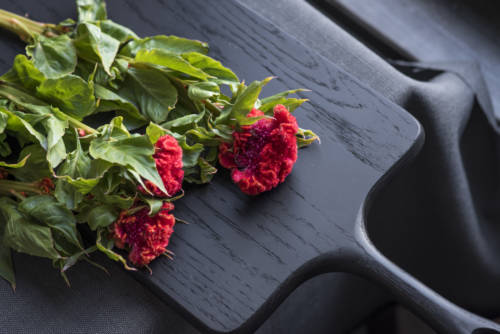
Don’t Be Afraid to Use the “Brain Flower” in Bouquets
Ask Ella is a recurring Garden Collage feature where we ask our in-house florist, Ella Stavonsky, about floral design– including the history of, origin, and maintenance that goes into some of the most intriguing flowers on the market today. This column is dedicated exclusively to common and rare varieties of flowers you’re likely to find at your local market. This week, we spotlight cockscomb, a vibrant, slightly alien-looking flower that’s a good garden staple for low-maintenance growers.
***
There is a great deal of confusion over the difference between celosia, cock’s comb (sometimes stylized as cockscomb), and the specific species that go by these names. Celosia is genus of plants that encompasses a classification of plants known as cock’s comb. Cock’s comb in turn can refer to a number of plants, which include the most common form of celosia (Celosia cristata, pictured in a miniature variety throughout this article) and the plume variety of cock’s comb (Celosia argentea). Sometimes different cock’s comb species go by lay names like wool flower (they have an oddly fuzzy texture) and mfungu (their name in Swahili).
Celosia cristata (the most ubiquitous form of cock’s comb) is named for its resemblance to the anatomical feature on a chicken (as its most common color is a saturated red) but its appearance seems more similar to a brain (apt for the month of October) or something you would expect to be growing at the bottom of the deep sea, rather than your backyard. It can also be found in vivid pinks, golden yellows, fiery oranges, and (occasionally) pale greens.
For bouquets, Celosia cristata in its full-sized glory is a bold statement– both in color and in shape. (We’ll admit, it can be pretty unnerving to look at.) Ella recommends using cockscomb in centerpieces, where you can go a little bigger with flowers and not have to worry about the C. cristata overpowering the arrangement. “A burgundy celosia looks beautiful with calla lilies, roses, and hydrangea. You can also try mixing in a bit of virburnum,” Ella tells us, regarding specific flowers you can complement cock’s comb with. “Dahlias can also pair nicely, as they have a similar texture in a way.”
In gardens, celosia (the genus writ large) is easy to cultivate. It’s of little surprise, then, that the plant is easy to care for in bouquets– simply give them cold water every other day. When your bouquet starts to look a little worse for the wear, you can hang your celosia upside down and dry it– and what better décor for Halloween?


































